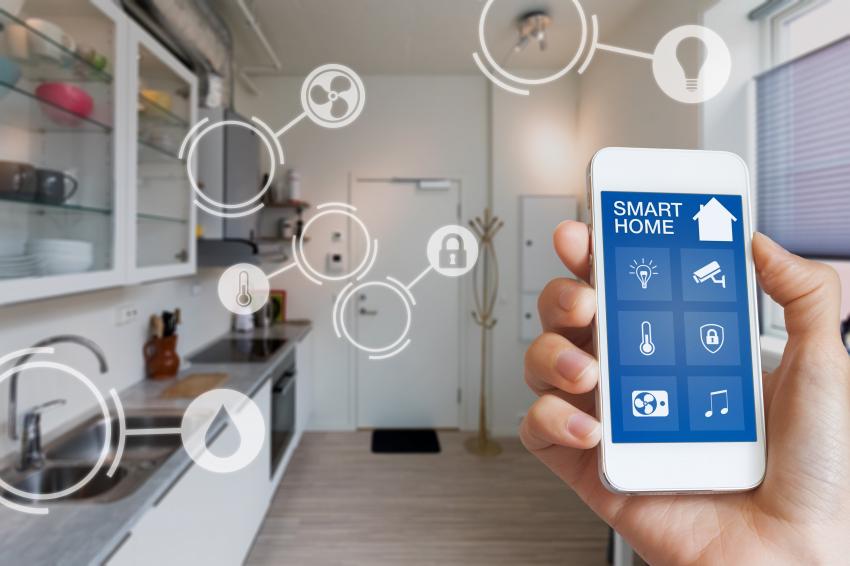The Business Models Gaining Ground in the Smart-Home Market
05.10.2017 - The smart home sector has expanded rapidly in recent years and represents one of the hottest areas of the consumer tech marketplace.While some analysts predict that the market itse...
The smart home sector has expanded rapidly in recent years and represents one of the hottest areas of the consumer tech marketplace.
While some analysts predict that the market itself could be worth almost $150bn globally by 2020, at 35% average annual growth, one area in particular is still at an early stage of development: that of business models.
Unsurprisingly, gaining market share in such a competitive industry is never easy, but notable successes have taken existing business models and innovated considerably, not only driving their own businesses but also blazing a trail for the entire sector’s future.
Meanwhile, the overall security picture of the space continues to develop, meaning that all stakeholders will need to continue to innovate and demonstrate best practice in order to maintain their position.
Security has been one of the key drivers of the smart home market, driven by the range of connected home cameras available on the market. These have brought basic home security services to thousands of homes for a very low initial price point.
Direct Retail
Many open-standards-based systems have encouraged users to network them with other smart sensors, such as door and window contact devices and movement detectors. Therefore they have gained relatively sophisticated home security systems on an incremental basis.
It’s no surprise then that the direct retail hardware market has been an obvious choice for many market entrants, being a familiar and well-established model.
Leveraging customer data in new, innovative ways will be the mark of the best and most disruptive connected home businesses
However, there has been considerable innovation even in this, with a wide range of non-traditional retailers moving in, selling white-labelled or aggregated services to their established customer base. Improving customers’ experience and enhancing customer loyalty will not only retain and attract customers, it will also – perhaps more importantly – minimise churn and improve margins, perhaps the most vital – and valuable – elements of the value chain.
However, simple high street device sales and general retail is not where the greatest innovation lies. The range of models has begun to diversify.
Service Bundles
Creating service bundles is an area of considerable innovative potential, and one area that has blossomed to date is where new green energy tariffs are linked with connected home products, creating a virtuous circle for consumers.
For example, one European utility is incentivising customers to sign up to a specific energy tariff by offering a voucher for a Smart Home Starter Pack.
Loyalty-Based
Another business model that is working well is the loyalty-based model, where consumer churn is reduced by leveraging connected home products. One major European utility has seen a significant drop in churn levels by providing smart thermostats to existing customers, and there is great promise for this model to be extended.
The opportunity to create new possibilities by aggregating new data points and sources is considerable.
For example, an insurance provider may be able to interpolate the data from a series of security and environmental sensors throughout a customer’s smart home to predict that insulation in a certain area could be improved, and then not only relay this to the customer, but also apply value-added services – such as discounted insulation – and offer a contract extension into the bargain.
It is the use of customer data, and leveraging it in new, innovative ways that will be the mark of the best and most disruptive connected home businesses. It will be vital to aggregate third-party data and segment it in new and powerful ways, most importantly in response to the market.
GDPR
It will be a more fluid data future, with one exception: the security of customer’s details.
Across Europe the incoming General Data Protection Regulation (GDPR) is set to enhance consumer protections across the board, and introduce a range of specific measures to prevent data being mishandled or lost.
The latter will carry significant new fines, of up to €20m or 4% of global annual turnover for the preceding financial year, whichever is the greater. For other breaches, the authorities could impose fines on companies of up to €10m or 2% of global annual turnover.
While these are huge numbers designed to enforce this important regulation, they are far from the most important part of the customer data story. Consumer trust is not easy to quantify in mere figures, but once lost it is very hard indeed to regain.
The smart home industry as a whole has a privileged position, with access into the very heart of consumers’ lives and their family environment, so the requirement to develop and maintain robust and transparent data policies is mandatory.
Overall, the smart home market is a sector of real excitement, dynamism and opportunity, and is only set to expand on almost every axis over the coming years. Given consumer trust, innovative thinking and a fair regulatory wind, the sky really is the limit as all products manufactured in the future look set to be smart and connected!
Contact
UBM EMEA
239 Blackfriars Road
SE1 8BF London
+442079218192









